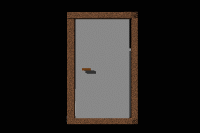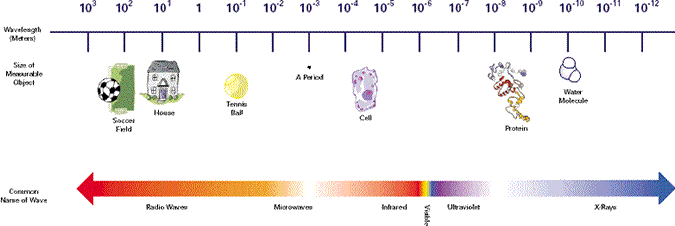

Matter appears organized on distinct levels in physical existence.
staircase | uniform measure | universe within you | spaces comprising persons
doors of perception
“If the doors of perception were cleansed every thing would appear to man as it is, Infinite. For man has closed himself up, till he sees all things thro' narrow chinks of his cavern.”
“my senses discovered the infinite in every thing, . . . ”
William Blake, The Marriage of Heaven and Hell, 1790-93.
"Each level of organization brings new properties that are greater than the sum of its parts. You could know everything about each of the atoms inside your own liver, but that would not tell you how it works. Hierarchical architecture, smaller things making larger entities with new defining properties, is the basic way our world is organized and ultimately reveals our deepest connections to the universe, solar system, and planet."
Neil Shubin, The Universe Within, pp. 16-17.
Scales in scientific measurement
"The smallest parts of our bodies have a history as big as the universe itself. Beginning as energy that converted into matter, the hydrogen atoms originated soon after the big bang and later recombined to form ever-larger atoms in stars and supernovae."
Neil Shubin, The Universe Within, p. 33.
"Extending our gaze beyond the limitations of our biology has meant seeing our size, and ourselves in a brand new light."
Neil Shubin, The Universe Within. p. 86.
"By extending beyond our biological inheritance, van Leeuwenhoek revealed we are all big creatures living in a world chock full of innumerable microscopic ones."
Neil Shubin, The Universe Within. p. 87.
A sequential and contingent level of organization.
How do we measure the levels of material existence?
The visual metaphor drawn as if the levels of material existence were a staircase suggest to us that the universe is arranged in discrete and separate – yet interlaced – layers; where the organization and function on one layer does not necessarily hold true for the adjacent layers.
But all of these layers are interdependent on the independent behavior of one another. Although all of the layers are interconnected such that cells or species are comprised of elements, atoms, and quarks, the difference in sizes across these dozen steps, poses a problem for measuring the relative size of living bodies, molecules and constituent parts of atoms. Taking the measure of the cosmos becomes a daunting task without some uniform means of expressing the varied sizes of so many material objects.
staircase | uniform measure | spaces comprising persons
Sizes differ in nature, but biology, chemistry, physics and geology share a common measure:
Measures are sometimes referred to as a "metric."
Two definitions are possible for metric, as it
Metric implies the act of taking the dimensions and extent of something by assigning numbers in a consistent manner to something under scrutiny. In the above diagram size is being accounted for with respect to a ruler on which the marks or demarcations are in exponential relation to one in respect to the decimal system. This means, when moving to the left the size increases from one to ten to one hundred and to one thousand: 1, 10, 100, 1000.
staircase | uniform measure | spaces comprising persons
This use of the decimal and logarithmic scales allows enormously small and very large objects to be compared. There is also the opportunity to compare magnetic and electrical forces with the amplitude and frequency or length or half-life and duration of electromagnetic waves. All sciences, astronomy, physics, geology, chemistry, ecology, and biology share this quantifiable scale in order to more accurately interpret the magnitude, variation and function of things in the surrounding material world.
The steps, in the initial diagram, can thus be measured with respect to the size of objects found on the steps along the stairs that are used metaphorically to envision how nature is organized on multiple levels of size. The right side of the scale is used to show how small something is in relation to say a period ( . ) which is the equivalent of 1/100th of a meter. Smaller than a period the scale accounts for things which exist that are no larger than one trillionth of a meter in extent (femtometre on the scale below).

In the example above it is clear that for using this metric scale, the material world we perceive can be measured with great precision and in doing so bodies and their constituent parts all comes down to a matter of size to see how one thing fits into the scheme of a larger functioning system.
"Virtually every part of the world we experience is influenced by our size, even how we visualize size itself. The size and shape of our pupils, our eyeballs, and lenses influence our visual acuity just as the shape and structure of different components of our ears affect the sound frequencies we hear. Because ours is a world tuned to the predators, prey, and other entities of our ancestors' worlds, we are like a radio that can receive only a small number of channels; vast portions of the world remain hidden . . . ."
So many signals lost on our senses from a cosmos beyond our comprehension.
Fritjof Capra, Web of life. New York: Anchor Books, 1996. pp. 223-303.
Preston Cloud, Cosmos, Earth and Man. 1973, pp.1-88.
Neil Shubin, The Universe Within: The Deep History of the Human Body, New York: Random House; Vintage, 2013. pages 16-17, 33, 85-87.
staircase | uniform measure | universe within you | spaces comprising persons